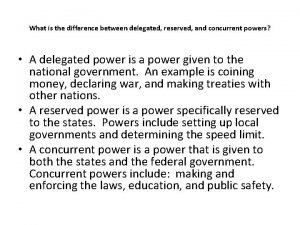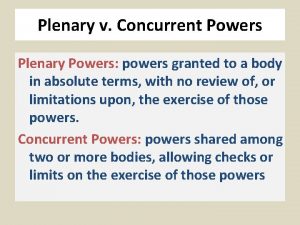Index Notation Powers and expanded notation Index notation







- Slides: 7

Index Notation Powers and expanded notation

Index notation is a short way of writing a number being multiplied by itself several times. For example – instead of writing 4 x 4 we can write 43 Index notation

�The number that is being multiplied by itself is known as the 'base'. �The number written above the base is known as the 'index' or the 'power'. �The index is the number of times that the base must be multiplied by itself Index notation

Place value and index notation �Indices can also be useful when writing large numbers. For example, each column of a value table can be expressed in powers of 10 by using index notation: Powers of ten

Expanded notation We can use the index notation above when writing numbers in expanded notation. Writing a number in expanded notation means breaking that number up in relation to its value to the power of 10. For example: In expanded notation, the number 3 657 428 would be written as 3 X 1 000 + 6 X 100 000 + 5 X 10 000 + 7 X 1 000 + 4 X 100 + 2 X 10 + 8 X 1 Alternatively the number can be written using index notation: (3 X 106) + (6 X 105) + (5 X 104) + (7 X 103) + (4 X 102) + (2 X 101) + (8 X 100) Expanded notation

Expand these using powers of ten– 4 562 056 2. 203 890 3. 1 222 118 1. Expanded notation

Solve these – 1. (4 X 106) + (2 X 105) + (5 X 104) + (1 X 103) + (4 X 102) + (7 X 101) + (5 X 100) 2. (1 X 106) + (6 X 105) + (2 X 104) + (4 X 103) + (0 X 102) + (5 X 101) + (9 X 100) Expanded notation
 Negative index notation
Negative index notation List the allied powers and the central powers
List the allied powers and the central powers Expressed or implied powers
Expressed or implied powers Was the united states on the axis powers or allied powers?
Was the united states on the axis powers or allied powers? Enumerated vs implied powers of congress
Enumerated vs implied powers of congress Expressed powers vs implied powers
Expressed powers vs implied powers Delegated powers vs. reserved powers
Delegated powers vs. reserved powers Presidential powers informal or implied powers
Presidential powers informal or implied powers













